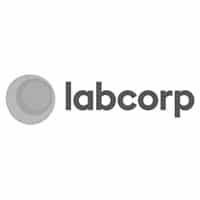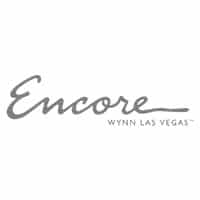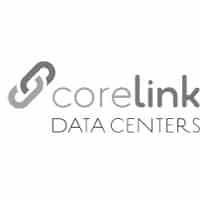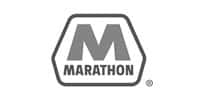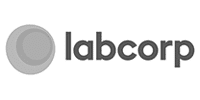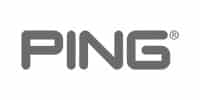2019 Data Center Power Trends

We just had the summer solstice and now that we are more than halfway through the year we are seeing industry trends emerge in data center power. Because energy use and the improvement of energy efficiency is a major priority within the data center industry, we continue to see new and innovative strategies being implemented. Sustainability remains the name of the game when it comes to data center energy consumption.
The data center power market is booming and this is unlikely to slow down anytime soon. This is due, largely, to the increased size and volume of data. With the advent of blockchain, artificial intelligence (AI) and more, data size has rapidly increased and that will only grow in coming years. Grand View Research reports that the data center power market size is expected to reach USD 10.77 billion by 2025!
Data center operators, forced with a challenging task to minimize downtime while simultaneously supplying an energy-efficient, continuous source of power, are constantly looking for new power infrastructure and management strategies. Data centers typically depend on power sources and backup power supplies that use batteries. While this is somewhat standard, any data center operator knows that batteries can be a lot to maintain and they often fail. Batteries have a limited lifespan and other factors, such as temperature and moisture, effect that lifespan, making them a challenging source of power because they can be unreliable at times. Not only are new strategies with more advanced and improved batteries being explored but additionally, strategies that do not use batteries at all are being implemented. Further, general infrastructure is being examined to determine if there is room for improvement that can facilitate better energy efficiency while maximizing reliability.
Lithium-Ion Batteries
Lithium-ion batteries are not new for 2019, but they are certainly popular this year! While many data centers have long used VRLA batteries, the tides are turning and more are implementing strategies that leverage the advantages of lithium-ion batteries.VRLA batteries have grown in popularity because they are a sealed battery system which means they are a virtually maintenance-free battery.
Advantages of Lithium-Ion Battery Use in Data Centers

Data Center Knowledge describes some of the distinct advantages that sep apart VRLA batteries and make them a great option for data center power, “Li-ion brings higher power capabilities and has greater energy density it can deliver more power with a reduced footprint and lower weight. Li-ion batteries can be up to three times more compact and six times lighter compared to VRLA batteries…it has higher cycle life than other battery technologies, which means that it has a longer life…they work more reliably in higher temperatures, requiring less cooling so reducing the batteries footprint. While there are several types of Li-ion chemistry, those comprised of iron phosphate are ideal for industries and mission critical applications where safety, power density and calendar life are important. Li-ion batteries come with high availability, with no risk of sudden death, low maintenance requirements and fast discharging rates. This minimizes the risk of unplanned outages in data centers. They can also be charged at much faster rates, increasing their availability after an outage or discharge. VRLA batteries normally need 12-24 hours to recharge, however, some can take as little as 75 minutes with the high-powered version taking just 15 minutes.”
Liquid Cooling
Liquid cooling is a hot trend in 2019…pun intended. While liquid cooling may sound counter-intuitive with so much electrical equipment, it actually has many advantages that make it an appealing choice over other cooling methods. Early methods of liquid cooling delayed its popularity because they were messy, difficult to implement, and in some cases, risky. While liquid cooling methods have been used for some time in large applications like universities or massive tech companies with custom architectures, liquid cooling is permeating the data center market now and its power is being leveraged in data centers of all sizes. After all, as we are all seeing, data size and volume is increasing which means that all data centers are going to be tasked with managing and cooling a different energy load than they are used to in the coming years.
This, of course, takes a little adjusting for some data centers because it works very differently than air cooling. Liquid cooling works by submerging equipment safely inside leak-proof containers within tanks that contain liquid coolants. These liquid coolants absorb heat produced by the IT equipment and keep IT equipment evenly and continuously cooled.
As aforementioned, liquid cooling has been used for some time in enterprise and other large-scale applications, but we are now seeing that more and more solutions are being created for smaller data center applications that make it easier to implement and scale liquid cooling solutions.
Liquid Cooling Has Many Benefits with Minimal Downside
Liquid cooling offers a number of benefits that make it appealing to data center operators. First, one of the most popular advantages is that it is basically maintenance-free. In a data center infrastructure management world where there is always something to maintain, reducing the maintenance required for cooling offers significant appeal.

Additionally, liquid cooling is much more efficient than air cooling because liquid has a higher heat absorption rate than air. A great example of how liquid cooling can be used to improve energy efficiency in legacy data centers is described by Data Center Knowledge, “Geosciences company CGG uses GRC’s immersion systems to cool a Houston data center where it does seismic data processing on commodity servers with powerful GPUs that consume up to 23kW per rack. That’s relatively high, but that kind of density is often cooled with air. ‘We put heavy compute into the immersion tanks for cooling,’ Ted Barragy, manager of CGG’s advanced systems group, said. But it’s not so much about the application workload as the economics of immersion.’ Immersion cooling replaced legacy cooling equipment in an old CGG data center during an upgrade. According to Barragy, the team recovered almost a megawatt of power capacity as a result of the upgrade. Even after a couple of years of adding servers and immersion tanks, ‘we still have half a megawatt of power we haven’t been able to use,’ he said. “This was an old legacy data center, and half the power was going into inefficient air systems.”
Increased Power Density Demands Manageable and Scalable Cooling Options
Further, power density in data centers (regardless of size) will continue to increase in the coming years with the rise of blockchain, artificial intelligence (AI), and other technologies that will place large, data-heavy loads on data centers. Because of this, data centers will need to find practical, manageable and scalable ways to power and cool their data centers which is why liquid cooling will continue to grow in popularity in 2019 and beyond.
Increased Power Demands Require Sophisticated Power System Design
The power demands being placed on data centers today is very different than it was 5 or 10 years ago. But, your data center may have been built and designed that long ago – or longer – and that can make it challenging to not only find the space for the necessary power supply, but the ability to design it in an efficient and effective way, as well as the ability to cool it. Many data center operators are going back to the drawing board of sorts and looking for new strategies to use in their legacy data centers or new data center builds. How data centers are powered (lithium-ion batteries, for example), and how that power efficiency is maximized (liquid cooling, for example) will be at the forefront of data center trends in 2019 as well as the years to come.


